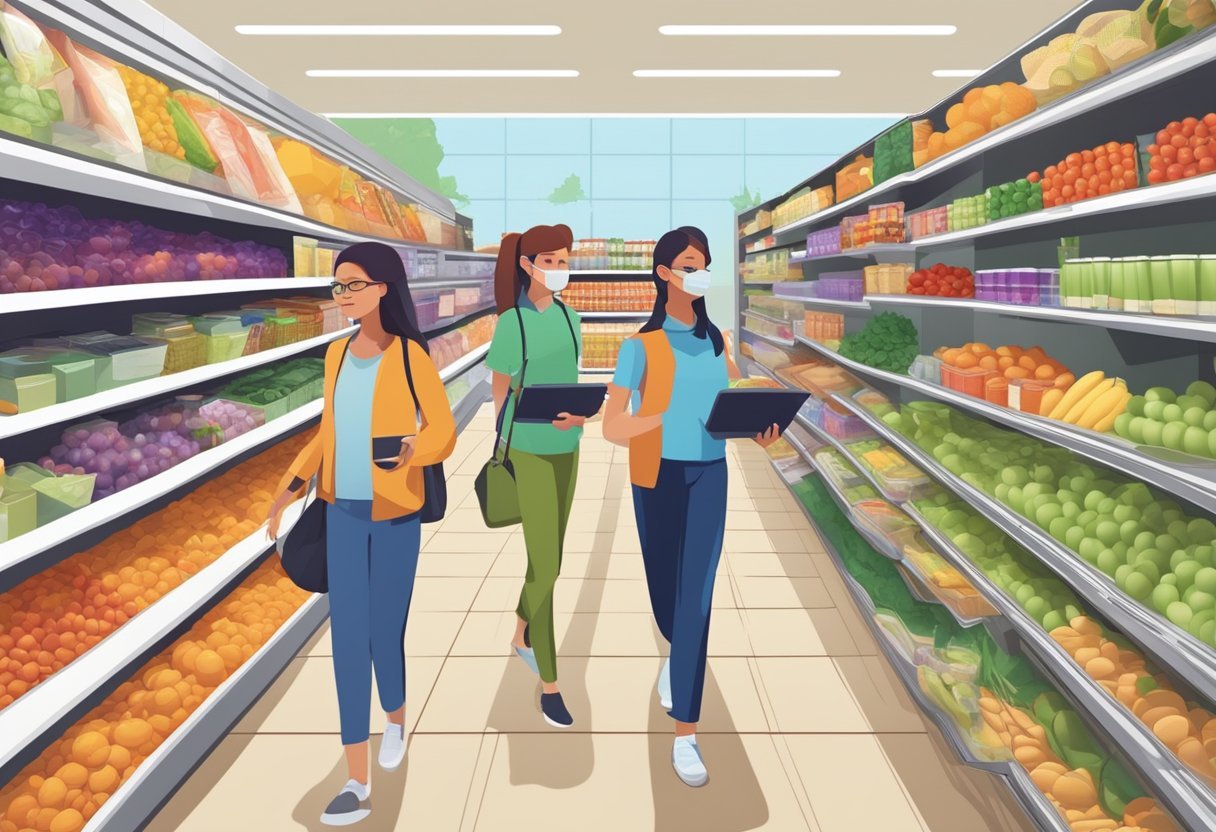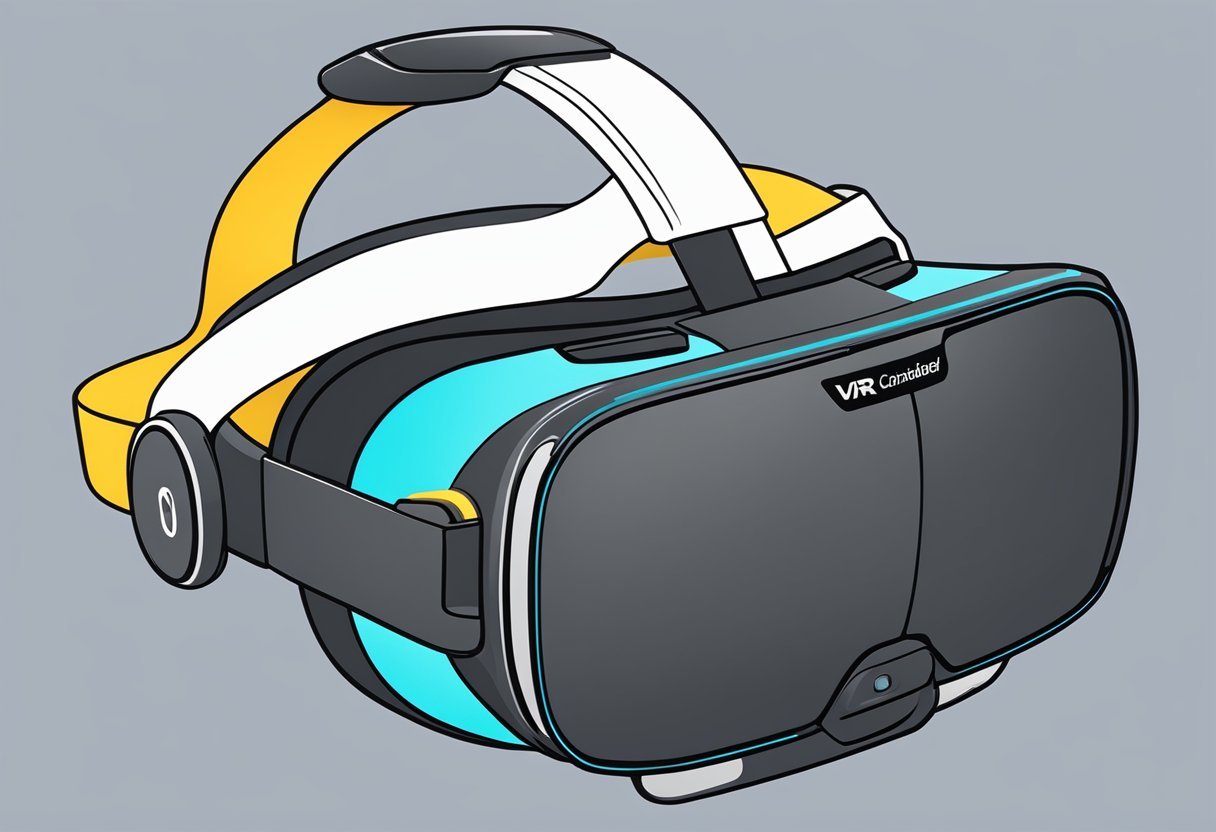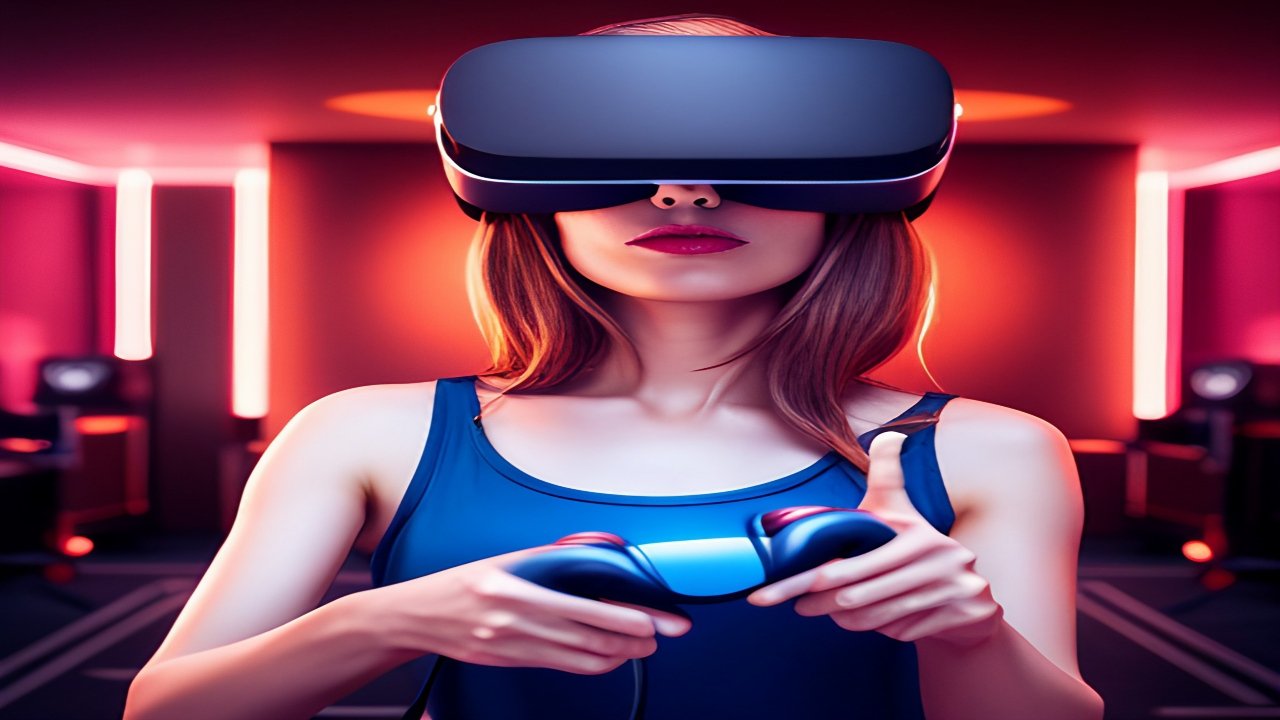Virtual reality grocery shopping is an emerging technology that is set to revolutionize the way consumers shop for groceries. With the rapid evolution of shopping technologies, virtual reality is becoming an increasingly popular tool for retailers looking to provide a unique and engaging shopping experience for their customers. By offering a fully immersive and interactive shopping experience, virtual reality has the potential to transform the way we shop for groceries.
The technological foundations of virtual reality shopping are built on a combination of hardware and software. Head-mounted displays (HMDs) and motion controllers are used to create an immersive virtual environment, while software applications provide the necessary tools for retailers to create and manage their virtual stores. The user experience and engagement are critical components of virtual reality grocery shopping, with retailers looking to provide a seamless and intuitive shopping experience that is both enjoyable and efficient.
Evolution of Shopping Technologies
The world of shopping has evolved tremendously over the years, and technology has played a significant role in this evolution. The advent of e-commerce has made it possible for consumers to shop online from the comfort of their homes. With the rise of smartphones, shopping has become even more accessible, and consumers can now shop on the go.
However, the pandemic has accelerated the shift towards online shopping, and retailers have had to adapt to this new reality. The pandemic has also highlighted the need for more innovative shopping technologies that can provide consumers with a more immersive shopping experience.
Virtual reality (VR) technology has emerged as one of the most promising shopping technologies in recent years. VR technology can provide consumers with a more immersive shopping experience, allowing them to explore products in a more interactive and engaging way. With VR technology, consumers can shop from anywhere in the world, and they can even try on products virtually.
Impact of the Pandemic on Online Shopping
The pandemic has had a significant impact on the way people shop. With social distancing measures in place, many consumers have turned to online shopping as a safer alternative to in-store shopping. This shift towards online shopping has led to a surge in demand for e-commerce platforms, and retailers have had to adapt to this new reality.
However, online shopping has its limitations, and it can be challenging for consumers to get a sense of the products they are buying. This is where virtual reality shopping comes in. VR technology can provide consumers with a more immersive shopping experience, allowing them to explore products in a more interactive and engaging way.
The evolution of shopping technologies has been driven by the need for more innovative and immersive shopping experiences. The pandemic has accelerated this shift towards online shopping, and virtual reality technology has emerged as one of the most promising shopping technologies in recent years.
Virtual Reality in Grocery Shopping-Use Cases
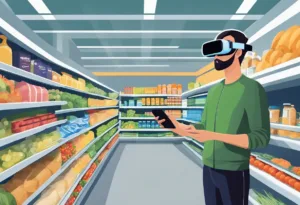
- Virtual Store Walkthroughs
- VR Training for Employees
- Remote Shopping Experiences
- Virtual Product Testing
- Store Layout and Design Testing
- Consumer Behavior Research
- Virtual Cooking Classes and Demos
- Stress-Free Checkout Simulation
- Virtual Brand Engagement
- VR-Based Customer Service Training
Virtual Store Walkthroughs
Virtual store walkthroughs allow customers to navigate a digital twin of the grocery store from the comfort of their homes. This VR application provides a fully immersive shopping experience, where users can explore aisles, examine products, and even add items to their virtual cart. It’s an excellent way for customers with mobility issues or time constraints to have a realistic shopping experience without physically visiting the store.
VR Training for Employees
VR training for employees in grocery stores can simulate various customer service scenarios, cashier operations, or even emergency situations without any risk. This immersive training can enhance employee preparedness, improve customer service skills, and ensure staff are well-equipped to handle the day-to-day operations of the grocery store efficiently.
Remote Shopping Experiences
Remote shopping experiences enabled by VR technology can offer customers the convenience of shopping from anywhere. Users can put on a VR headset and be transported to the grocery store, selecting products as if they were there in person. This can be particularly beneficial for individuals who are unable to visit the store due to health, distance, or time restrictions.
Virtual Product Testing
Virtual product testing allows customers to try products in a simulated environment. For instance, VR can help customers visualize how a new food product might fit into their meal plans or taste through virtual taste simulations. This can lead to more confident purchasing decisions and a fun, interactive way to discover new products.
Store Layout and Design Testing
VR can be used by grocery store designers and managers to test out different store layouts and designs before implementing them in the real world. By navigating a virtual model of the store, stakeholders can assess the flow, aesthetics, and practicality of different designs, saving time and resources on physical mock-ups.
Consumer Behavior Research
Consumer behavior research within a VR grocery store can provide valuable insights into how customers interact with products and store layouts. Researchers can track where users look, how they navigate, and what items they select, gathering data that can inform marketing strategies and store design choices.
Virtual Cooking Classes and Demos
Grocery stores can use VR to offer virtual cooking classes and product demonstrations. Customers can participate in immersive cooking experiences, learning how to prepare dishes with products found in the store. This engaging use of VR can inspire customers to purchase new products and try new recipes.
Stress-Free Checkout Simulation
A stress-free checkout simulation in VR can help customers who are anxious about the checkout process practice in a calm, controlled environment. This can be particularly useful for those new to self-checkout systems or for training staff to handle various checkout scenarios.
Virtual Brand Engagement
Virtual brand engagement experiences within a VR grocery store can create unique interactions between customers and brands. For instance, users might visit a virtual farm to learn about the origin of a product or participate in a game that promotes a new item. These brand experiences can be more memorable and impactful than traditional advertising.
VR-Based Customer Service Training
VR-based customer service training can simulate a wide range of customer interactions for employees, from routine questions to handling complaints. This form of training can improve empathy, problem-solving skills, and overall customer service by providing a safe space for employees to practice and learn from their experiences.
Current VR Shopping Platforms
One of the most popular VR shopping platforms is Amazon’s “Prime VR.” This platform allows users to browse and purchase products in a virtual environment. Walmart has also been exploring the use of VR in grocery shopping. In 2017, Walmart created a virtual reality demo for the Texas-based festival South by Southwest. The demo allowed users to browse and select products in a virtual store.
Benefits for Consumers and Retailers
VR offers several benefits for both consumers and retailers. For consumers, VR shopping can provide a more immersive and engaging experience. Users can browse and select products in a virtual environment that closely mimics the real-world shopping experience. VR shopping can save time and reduce the hassle of physically going to a store.
For retailers, VR shopping can provide valuable insights into consumer behavior. Retailers can track user interactions and analyze data to optimize their product offerings. VR shopping can also reduce the costs associated with maintaining a physical store.
VR shopping is a technology that is transforming the way consumers shop for groceries. With the global AR/VR market currently standing at more than 19.44 billion, the push to expand into virtual spaces continues to grow. As more retailers explore the use of VR in grocery shopping, consumers can expect a more immersive and engaging shopping experience.
Technological Foundations of VR Shopping
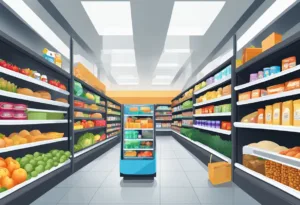
Key Hardware and Software
Virtual Reality (VR) shopping is a promising technology that allows users to shop for groceries in a completely immersive environment. To achieve this, VR shopping requires specific hardware and software technologies. VR headsets are the most important hardware component of VR shopping. They are designed to allow users to experience a fully immersive environment. Some of the most popular VR headsets on the market include Oculus Quest, HTC Vive, and PlayStation VR.
In addition to VR headsets, VR shopping also requires powerful software. Unity is one of the most popular software platforms for developing VR shopping applications. Unity is a cross-platform game engine that allows developers to create highly interactive and immersive virtual environments. It is widely used in the gaming industry and has been adapted for VR shopping.
Integrating AR and VR for Enhanced Experiences
Augmented Reality (AR) technology can be integrated with VR shopping to enhance the user experience. AR technology can be used to superimpose virtual objects on the real world, while VR technology creates a completely immersive environment. By integrating AR and VR technologies, users can experience a hybrid environment that combines the best of both worlds.
3D content is another important component of VR shopping. It is used to create virtual objects and environments that users can interact with. 3D content is created using specialized software tools such as Blender, Maya, and 3ds Max. These tools allow developers to create highly detailed and realistic 3D models of objects and environments.
Hardware is also crucial to the success of VR shopping. High-performance processors, graphics cards, and memory are required to deliver a smooth and immersive experience. The hardware requirements for VR shopping are constantly evolving, and developers must stay up-to-date with the latest hardware trends to ensure that their applications are compatible with the latest hardware.
VR shopping is a promising technology that requires a combination of hardware and software technologies. VR headsets, Unity, AR technology, and 3D content are all crucial components of VR shopping. By integrating these technologies, developers can create highly immersive and interactive virtual environments that allow users to shop for groceries in a completely new way.
User Experience and Engagement
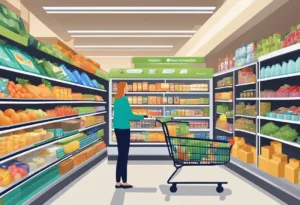
Creating Immersive Shopping Environments
Virtual reality grocery shopping provides users with an immersive experience that simulates shopping in a real store. The technology allows users to explore a virtual environment and interact with products in a way that feels natural and intuitive. By using VR, users can touch and examine products, read labels, and compare prices, all while feeling as if they are physically present in the store.
In addition to providing a realistic shopping experience, VR grocery shopping also offers a level of convenience that traditional shopping cannot match. Users can shop from anywhere, at any time, without having to leave their homes. This is especially useful for people who are unable to physically visit a store due to mobility issues or other limitations.
Personalization and Interactivity
One of the key benefits of virtual reality grocery shopping is the level of personalization and interactivity it offers. By using data analytics and machine learning, VR grocery stores can tailor the shopping experience to each individual user. For example, the store can suggest products based on the user’s previous purchases or dietary preferences. This level of personalization can help users make more informed purchasing decisions and lead to a more satisfying shopping experience.
Interactivity is another key component of VR grocery shopping. Users can interact with products and receive detailed information about them, such as nutritional content or cooking instructions. This level of interactivity can help users make more informed purchasing decisions and feel more engaged with the shopping experience.
Virtual reality grocery shopping provides users with a unique and engaging shopping experience that is both convenient and personalized. By creating immersive environments and offering a high level of interactivity, VR grocery stores can provide users with a shopping experience that is both informative and enjoyable.
Challenges and Future Trends
Overcoming Barriers to Adoption
Virtual reality (VR) grocery shopping is an emerging technology that is not without its challenges. One of the biggest challenges is the high cost of building an AR/VR grocery app. This cost can be a barrier to entry for small retailers who may not have the resources to invest in such technology. The adoption of VR in grocery shopping is still in its early stages, and many consumers may not be familiar with the technology or comfortable using it.
Another challenge is the need for high-quality VR devices to provide a seamless experience for users. While the cost of VR devices has decreased in recent years, they are still relatively expensive for many consumers. Furthermore, the technology is not yet widely available in all parts of the world, which limits its reach.
Predictions for VR in Retail
Despite these challenges, the future of VR in the retail industry looks promising. According to a report by eMarketer, retail sales in the US are expected to reach $5.5 trillion by 2022, and VR is poised to play a significant role in this growth. In fact, Facebook (now Meta) has already started exploring the use of VR in retail, with the launch of Horizon Workrooms, a virtual collaboration tool for remote teams.
In the future, retailers may use VR to create immersive shopping experiences that allow consumers to explore products in a virtual environment. This could include features such as 360-degree product views, virtual try-ons, and interactive product demonstrations. VR could be used to create personalized shopping experiences that cater to individual preferences and needs.
The adoption of VR in grocery shopping is expected to increase in the coming years, as more retailers invest in the technology and consumers become more familiar with it. While there are still challenges to overcome, the potential benefits of VR in retail are significant, and retailers who embrace this technology are likely to see increased engagement and sales from their customers.
Frequently Asked Questions
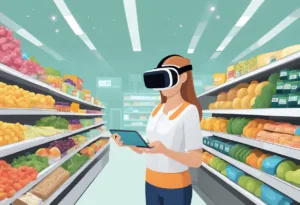
How does virtual reality enhance the online grocery shopping experience?
Virtual reality enhances the online grocery shopping experience by providing a more immersive and interactive experience. With virtual reality, users can explore a virtual grocery store and interact with products in a more realistic way. This creates a more engaging and personalized experience for the user, which can lead to increased satisfaction and loyalty.
Are there any applications that allow for virtual reality grocery shopping?
Yes, there are several applications that allow for virtual reality grocery shopping. Some examples include the virtual grocery store built with augmented and virtual reality by HQSoftware and the grocery shopping application developed by Johnson Ma.
What are the benefits of using virtual reality for grocery shopping?
The benefits of using virtual reality for grocery shopping include increased engagement, personalization, and convenience. Virtual reality allows users to explore a virtual grocery store and interact with products in a more realistic way, which can create a more engaging and personalized experience. Virtual reality can provide a more convenient shopping experience by allowing users to shop from the comfort of their own homes.
Can virtual reality be used for educational purposes, such as teaching students about grocery shopping?
Yes, virtual reality can be used for educational purposes, such as teaching students about grocery shopping. Virtual reality can provide a more immersive and interactive learning experience, which can lead to increased engagement and retention of information. Virtual reality can provide a safe and controlled environment for students to learn and practice new skills.
What is the potential future of grocery shopping with the integration of VR technology?
The potential future of grocery shopping with the integration of VR technology is vast. Virtual reality can provide a more engaging, personalized, and convenient shopping experience for users. Virtual reality can provide retailers with valuable data and insights into consumer behavior and preferences, which can lead to more effective marketing and product development strategies.
How does shopping in a virtual grocery store differ from traditional online shopping?
Shopping in a virtual grocery store differs from traditional online shopping in several ways. Virtual reality provides a more immersive and interactive experience, which can create a more engaging and personalized experience for the user. Virtual reality allows users to explore a virtual grocery store and interact with products in a more realistic way, which can lead to increased satisfaction and loyalty. Traditional online shopping, on the other hand, typically involves browsing through a list of products and making selections based on text and images.

